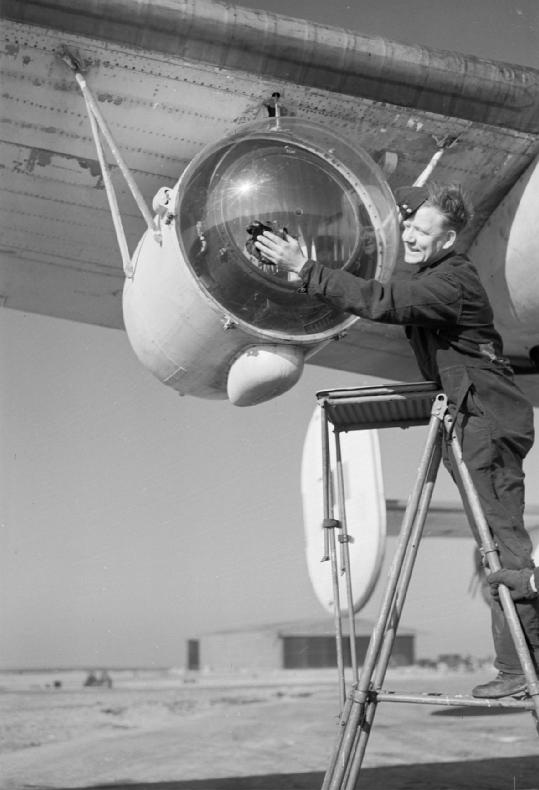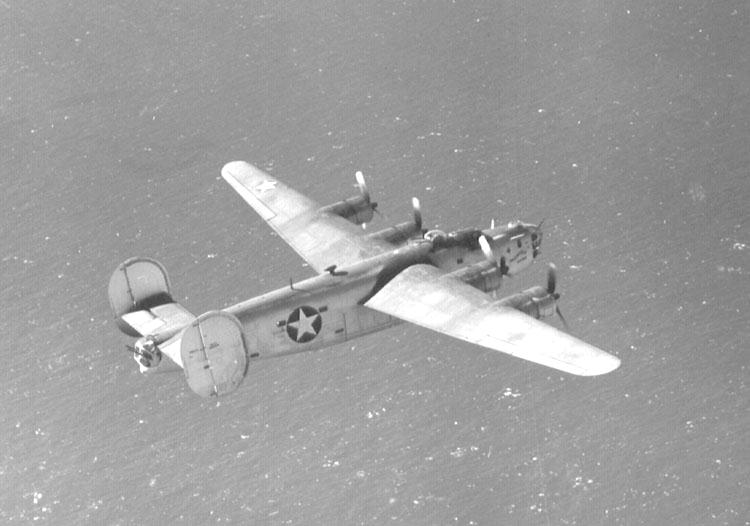LIBERATOR PB4-Y ANTI SUBMARINE ROLE IN BRAZILIAN COAST
Heavy bomber
Anti-submarine warfare
Maritime patrol aircraft
Manufacturer Consolidated Aircraft
First flight 29 December 1939
Introduction 1941
Retired 1968 (Indian Air Force)
Primary users United States Army Air Forces
United States Navy
Royal Air Force
Royal Australian Air Force
Produced 1940–1945
Number built 18,500
Unit cost
$297,627 ($5.07 million in today's dollars)
Variants
Consolidated PB4Y-2 Privateer
Consolidated C-87 Liberator Express
Consolidated Liberator I
Developed into Consolidated R2Y
The Consolidated B-24 Liberator is an American heavy bomber, designed by Consolidated Aircraft of San Diego, California. It was known within the company as the Model 32, and some initial production aircraft were laid down as export models designated as various LB-30s, in the Land Bomber design category.
At its inception, the B-24 was a modern design featuring a highly efficient shoulder-mounted, high aspect ratio Davis wing. The wing gave the Liberator a high cruise speed, long range and the ability to carry a heavy bomb load. Early RAF Liberators were the first aircraft to cross the Atlantic Ocean as a matter of routine. In comparison with its contemporaries the B-24 was relatively difficult to fly and had poor low speed performance; it also had a lower ceiling and was less robust than the Boeing B-17 Flying Fortress. While aircrews tended to prefer the B-17, General Staff favored the B-24, and procured it in huge numbers for a wide variety of roles. At approximately 18,500 units – including over 4,600 manufactured by Ford Motor Company – it holds records as the world's most produced bomber, heavy bomber, multi-engine aircraft, and American military aircraft in history.
The B-24 was used extensively in World War II. It served in every branch of the American armed forces, as well as several Allied air forces and navies, and saw use in every theater of operations. Along with the B-17, the B-24 was the mainstay of the U.S. strategic bombing campaign in the Western European theater. Due to its range, it proved useful in bombing operations in the Pacific, including the bombing of Japan. Long range anti-submarine Liberators played an instrumental role in closing the Mid-Atlantic gap in the Battle of the Atlantic. The C-87 transport derivative served as a longer range, higher capacity counterpart to the Douglas C-47 Skytrain.

Anti-Submarine Weapons: Leigh light used for spotting U-boats on the surface at night, fitted to a Liberator aircraft of Royal Air Force Coastal Command. 26 February 1944.
Photo. - This is photograph CH 13997 from the collections of the Imperial War Museums.
https://en.wikipedia.org/wiki/Consolidated_B24_Liberator#/media/File:Leigh_Light.jpg
By the end of World War II, the technological breakthroughs of the Boeing B-29 Superfortress and other modern types had surpassed the bombers that served from the start of the war. The B-24 was rapidly phased out of U.S. service, although the PB4Y-2 Privateer maritime patrol derivative carried on in service with the U.S. Navy in the Korean War.
https://en.wikipedia.org/wiki/Consolidated_B-24_Liberator
U.S. Navy operated 13 Anti Submarine Squadrons scattered throughout the vast Brazilian coast ranging from Amapa in Amazon estuary to Santa Cruz at rio de Janeiro. PB4-Y were operated from Parnamirim Field at Natal on Northeastern coast with 12 aircrafts. These are as follows:
VB-107 - Natal - RN (Parnamirim Field) 15/6/1943 to 10/01/1945 - with PB4Y-1 Liberator.
VP-74 - Natal - RN (Ramp) 18/12/1942 to 04/28/1943 - with PBM-3C Mariner.
Aircrafts also operated in Salvador - BA (Aratu), Galeão (RJ) and Belém.
It sank the German submarines U-513 (7/19/1943) and U-161 (09/27/1943).
It located the submarine U-199 off Marica Rio de Janeiro and began the combat that resulted in the her sinking by Catalina "2" of the FAB Brazilian air Force on July 31, 1943.
VP-83 - Natal - RN (Parnamirim Field) 7/4/1942 to 1/5/1943 - with PBY-5A Catalina.
It sank the German submarines U-164 (1/6/1943) and U-507 (01/13/1943) and the Italian submarine Archimede (15/4/1943).
VP-94 - Natal - RN (Parnamirim Field) 21/01/1943 to 18/7/1943 - with PBY-5A Catalina.
VP 94 had aircrafts in Rio de Janeiro (Santos-Dumont), Belém,
Fortaleza, Recife, Salvador, São Luis, Fernando de Noronha, Maceió, Caravelas (BA) and Santa Cruz. Sank the German submarines U-590 (09/07/1943) and U-662 (21/7/1943).
VB-107 -- Natal - RN (Parnamirim Field) 15/6/1943 to 10/01/1945 - with PB4Y-1 Liberator.
This Squadron is the transformation of the VP-83, now endowed with the PB4Y-1.
It sank the following German submarines: U-598 (23/07/1943), U-848 (05/11/1943), U-849 (11/25/1943), U-177 (06/2/1944) and U-863 (09/29/1944).
For the excellent services rendered in the war, it received the Presidential Unit Citation.

Above one PB4-Y (Macahyba Madam) over the South Atlantic expanses in a routine patrol mission
VPB-125 - Natal - RN (Parnamirim Field) 3/18/1945 to 4/30/1945 - with PV-1 Ventura.
Aircrafts also operated in Fortaleza and Fernando de Noronha.
VPB-126 - Natal - RN (Parnamirim Field) 1/18/1945 to 5/21/1945 - with PV-1 Ventura. Aircrafts were also based in Fortaleza.
VB-127 - Natal - RN (Parnamirim Field) 14/5/1943 to 02/02/1943 - with PV-1 Ventura. Aircrafts were also based in Fortaleza.
It sank the German submarine U-591 (7/31/1943).
VB-129 - Natal - RN (Parnamirim Field) 30/5/1943 to 6/15/1943 - with PV-1 Ventura. Aircrafts were also based in Recife and Salvador (Ipitanga)
They took part in the sinking of the German submarine U-604 (7/30/1943).
VP-143 - Natal - RN (Parnamirim Field) 16/9/1943 to 01/28/1944 - with PV-1 Ventura. Aircrafts were also based in Salvador (Ipitanga).
It was replaced by the 2nd Medium Bomber Group of the FAB, which was based in Salvador, BA.
VB-145 - Natal - RN (Parnamirim Field) 16/9/1943 to 01/01/1945 - with PV-1 Ventura. Aircraft were also based in Fernando de Noronha, Ascension Island and Salvador (Ipitanga).
VP-203 - Salvador - BA (Aratu) 10/10/1943 to 23/01/1944 - with PBM-3S Mariner. Aircrafts were also based in Natal - RN (Rampa), Florianópolis - SC, Galeão (RJ) and Salvador (Aratu).
VP-211 - Salvador (Aratu) 16/10/1943 to 12/11/1943 - with PBM-3C Mariner.
Aircraft also were based in Galeão (RJ) and Natal (The Ramp).
Select nao autorizado. You have an error in your SQL syntax; check the manual that corresponds to your MySQL server version for the right syntax to use near 'and a.id <> 3287 order by ordem asc' at line 1